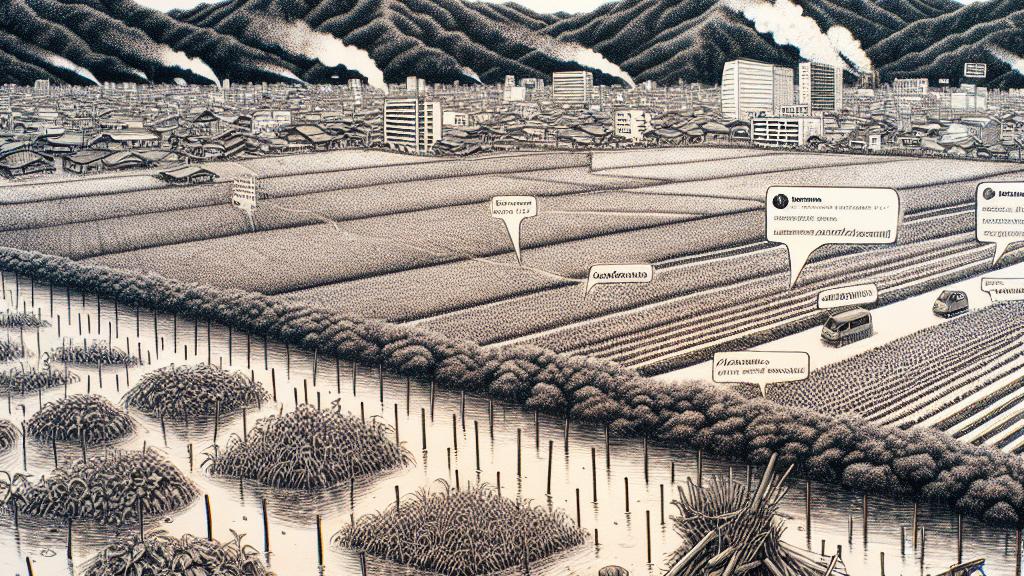Increasing Abandonment of Farmland: The Waterway Crisis
Overview
- Blocked waterways are creating significant flooding problems for farmers.
- In Yamagata, Japan, increasing farmland abandonment spells disaster for local agriculture.
- If left unchecked, this trend could lead to dire socio-economic ramifications, pushing more people towards urban centers.

Illuminating the Yamagata Crisis
In the picturesque region of Yamagata, Japan, a troubling crisis is unfolding as farmland becomes increasingly abandoned. Picture this: a once-bustling field now resembles a swamp. Recent rains caused a crucial waterway to become obstructed, leading to severe flooding that devastated crops. Farmers, turning to social media, shared their despair, voicing frustration over how relentless flooding makes sustained farming feel impossible. This heartbreaking scenario not only highlights the immediate dangers posed by climate change but also reflects the broader systemic challenges threatening Japan’s rural agriculture. As these issues accumulate, farmers find themselves caught in a cycle of despair, struggling to maintain their way of life.
The Ripple Effect of Farmland Abandonment
The consequences of increasing farmland abandonment are shockingly extensive. With fields neglected, pest populations like insects thrive unchecked, prompting local wildlife, such as deer and wild boar, to invade human habitats—a phenomenon that not only threatens crops but also public safety. One farmer warned, 'If the trend continues, we may soon face an invasion of wildlife that disrupts not just our farms but our homes!' Furthermore, the decline of agriculture can drive residents toward urban areas, trading their rural lives for uncertain futures in cities. This mass migration presents dire economic concerns, as local economies risk collapsing under the weight of abandonment, leading to a loss of community, cultural identity, and sustainable practices. Each abandoned field tells a story, a cautionary tale of a future that could unravel if trends are not reversed.
Actionable Responses and Strategic Solutions
To combat this agricultural crisis effectively, we must implement proactive and inclusive strategies. The Japanese Ministry of Agriculture is stepping up, developing policies geared at empowering local farmers while fostering community resilience. Imagine local farmers banding together, not just to maintain waterways but also to create workshops focused on sustainable practices and innovations. For example, programs that emphasize soil health and crop diversity could revitalize farming dynamics. Public support can also significantly bolster these efforts, ensuring resources and education reach those most in need. By weaving together the strands of agriculture, community collaboration, and water resource management, we have the opportunity to create not only a thriving rural economy but also a sustainable future for generations to come.

Loading...